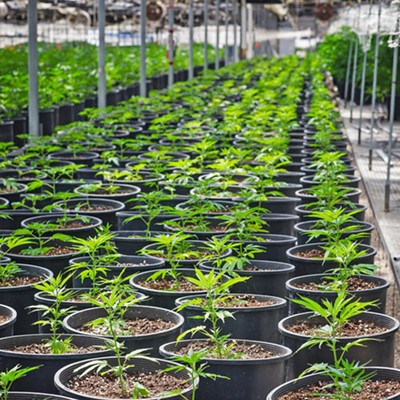During the county Planning Commission meeting on Jan. 22, Santa Barbara County Agricultural Commissioner Cathy Fisher presented the findings of a working group that was charged with identifying solutions to issues some farmers have encountered when applying pesticides to crops near cannabis farms.
The root of the issue stems from the strict state-mandated testing that cannabis undergoes prior to being sold to consumers, Fisher said. Cannabis products are tested at laboratories for 66 pesticide ingredients. If even small traces of these ingredients are found on the cannabis, the products cannot be sold.
“I don’t know why [the state] chose these 66 active ingredients,” Fisher said. “Some of them are actually organic materials. Some of them are actually quite benign.”
Because of these testing requirements, some avocado, citrus, and other farmers in the county—especially in Carpinteria—are finding it difficult to hire pesticide applicators to spray their farms. Fisher said these business operators are concerned that they would be held accountable for any pesticides that may drift over and contaminate nearby cannabis farms.
As a result, some farmers have switched to different pesticides that aren’t on the state’s list of 66 ingredients. But Fisher said farmers are finding that these materials are less effective and need to be applied more frequently, which has led to crop damage and increased production costs.
To find solutions to some of these issues, Fisher’s office assembled a working group of 11 people from the cannabis, traditional agriculture, and pesticide application industries. This group met five times over a three-month period near the end of last year.
Through these discussions the group developed two documents with recommendations aimed at helping all industries coexist. “Best Practices for Pesticide Applications” includes various suggestions that could help offset the risk of pesticide drift, and “Who Are My Neighbors?” includes ideas that help foster better relationships between adjacent farmers. Both documents are available on the Agricultural Commissioner Weights and Measures Department website.
The first document suggests traditional agricultural farmers could select pesticides not on the state’s list of 66 ingredients and install temporary screens or fences when spraying, among other ideas. For cannabis farmers, the document recommends they protect their plants with crop blankets and perimeter screening when necessary.
The second document emphasizes the importance of adjacent farmers communicating with each other about various topics, including pesticide spray and harvest schedules as well as the pesticides being applied to the crops.
Fisher told the Planning Commission that the working group didn’t develop these recommendations to be adopted as regulations or added as conditions to new cannabis cultivation permits.
“These two documents have been created by the working group as a resource of guidelines and suggestions for growers and cannabis neighbors to consider,” Fisher said.












